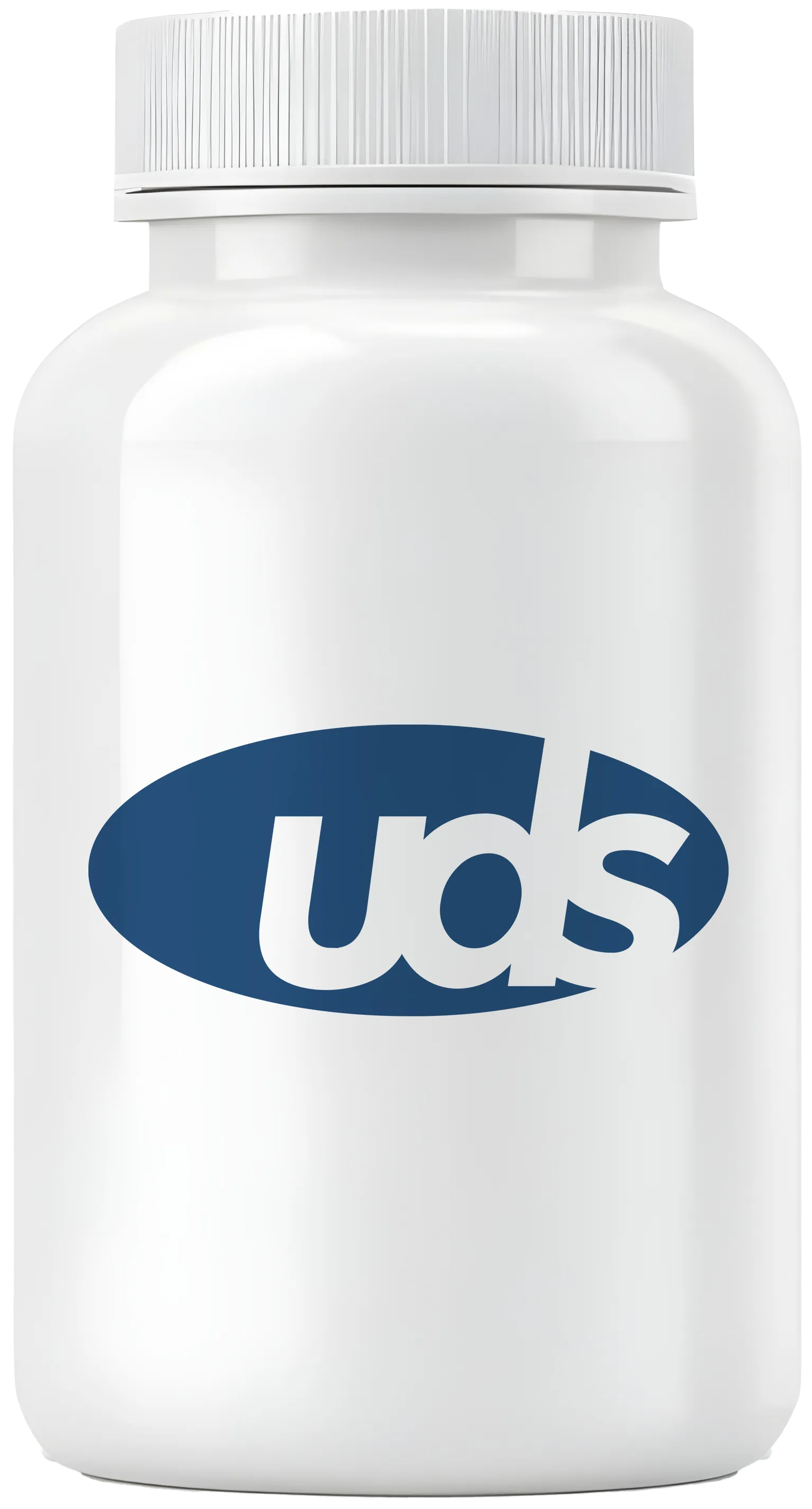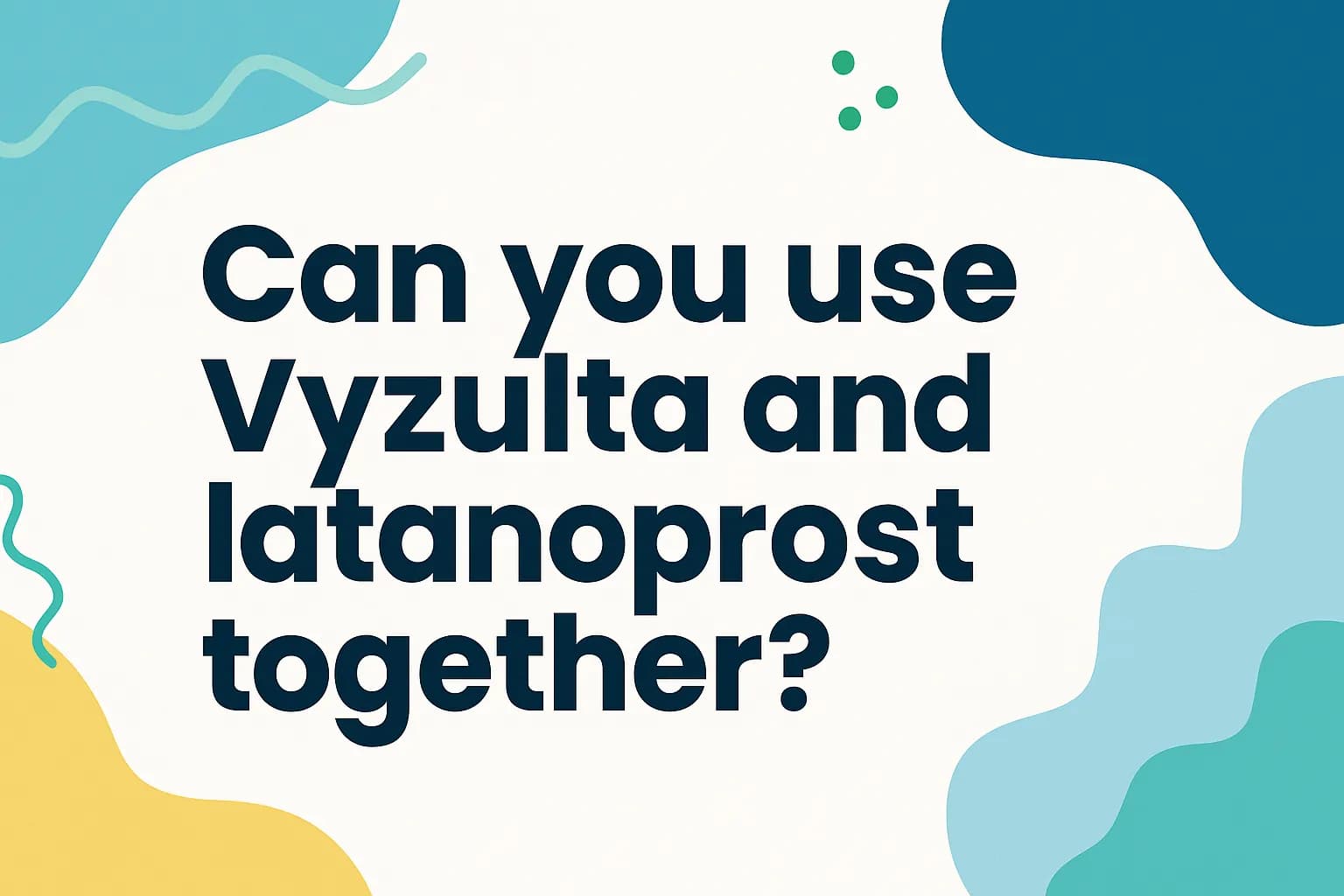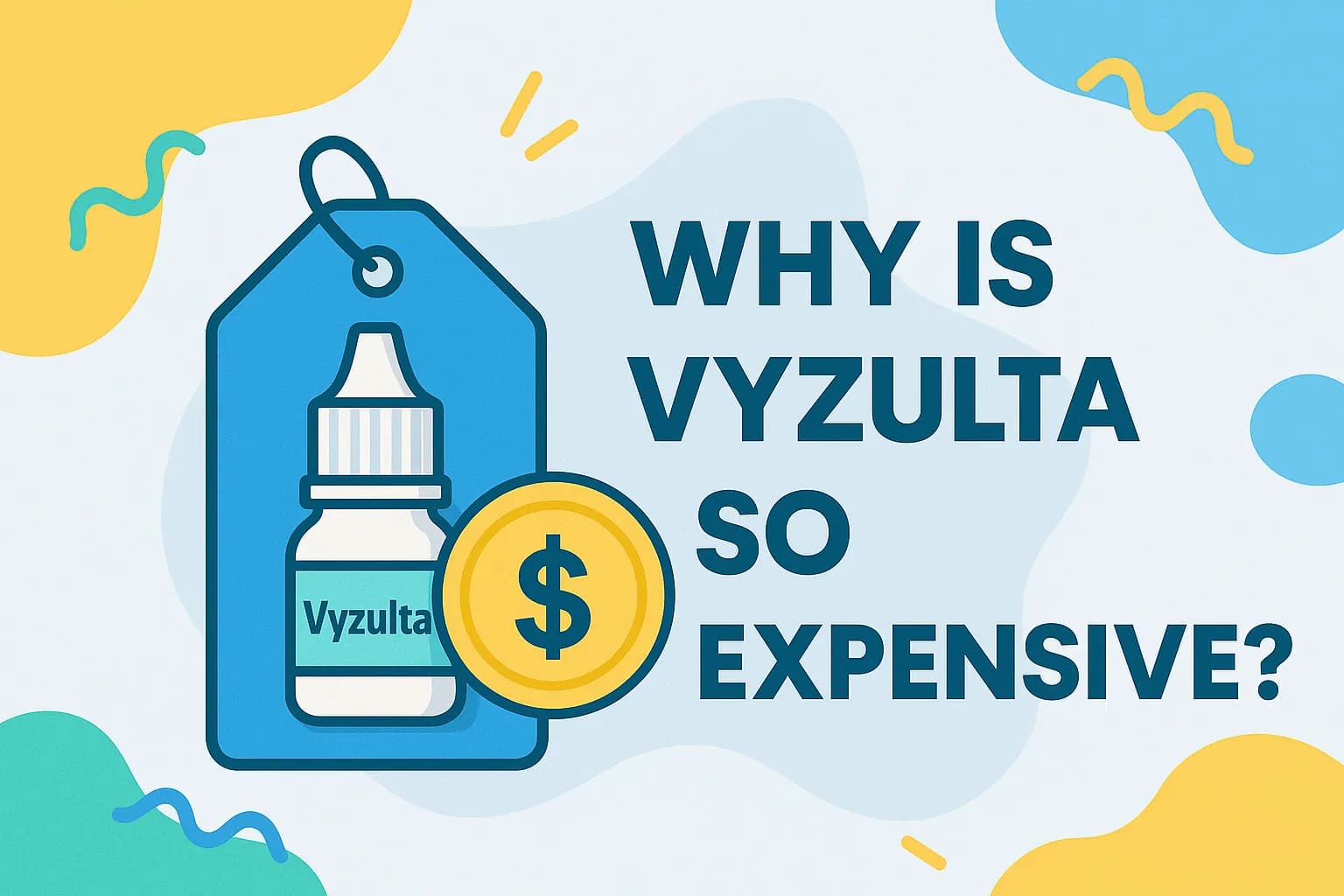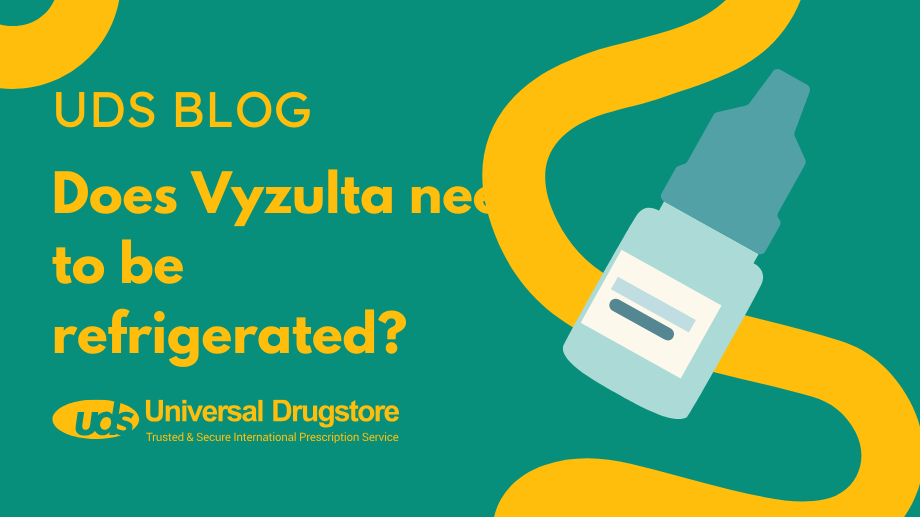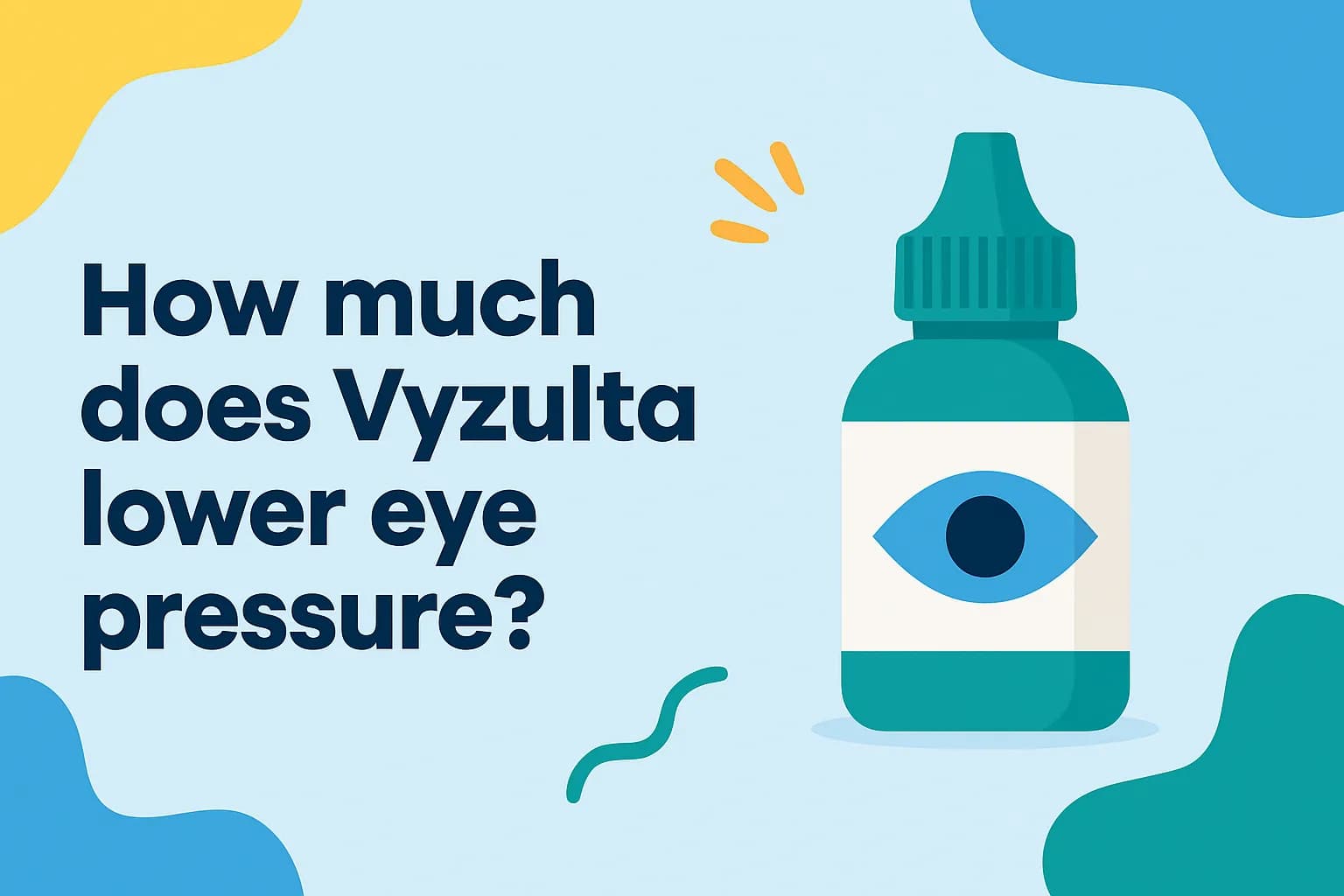How much does Vyzulta lower eye pressure?
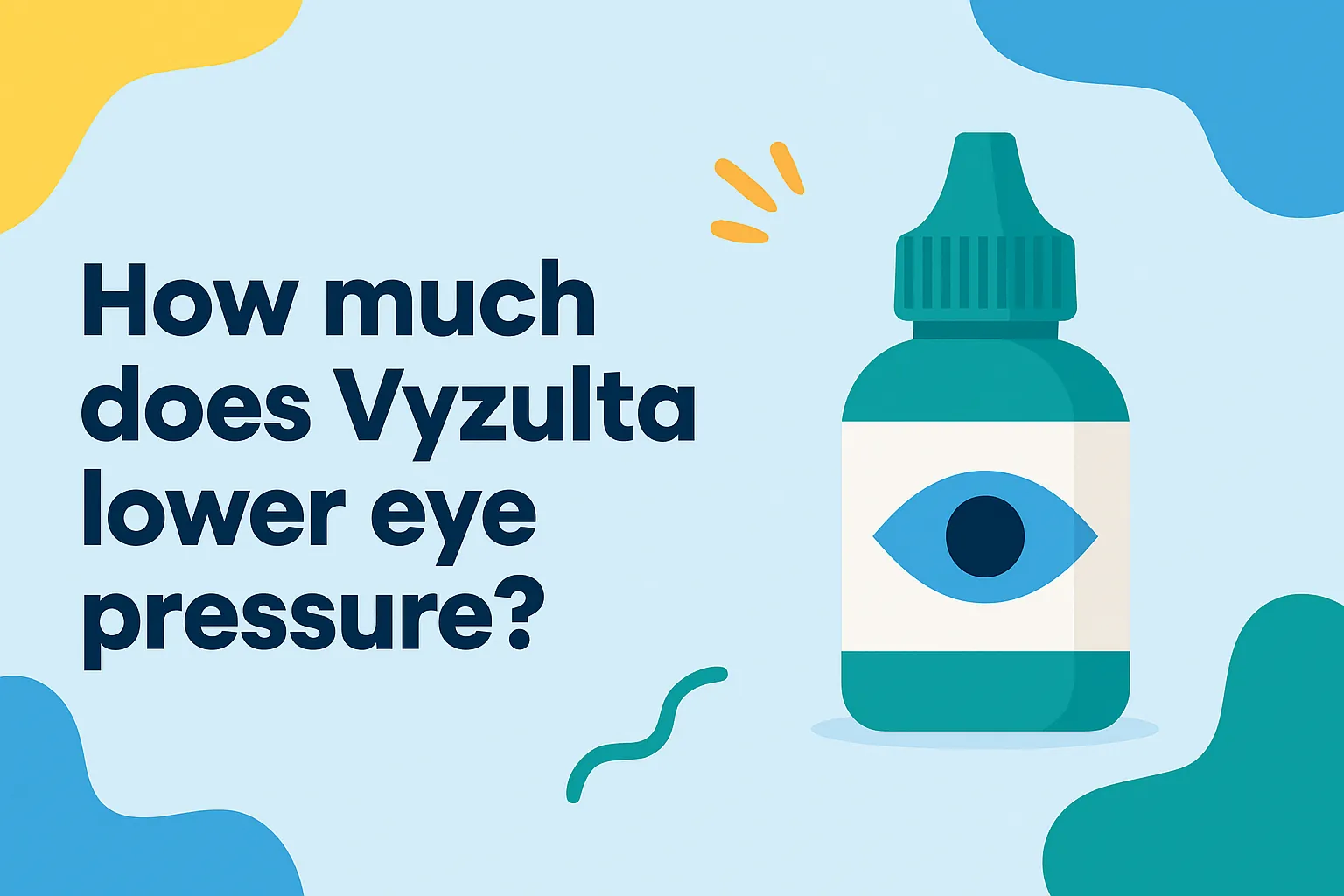
Vyzulta (latanoprostene bunod ophthalmic solution) is a topical eye drop used to treat open-angle glaucoma or ocular hypertension. Open-angle glaucoma occurs when the fluid in one or both of your eyes does not drain properly. It increases the pressure in your eye, which can damage the optic nerve. If left untreated, open-angle glaucoma is an eye disease that gradually causes a loss of visual field and eventually complete loss of vision.
Vyzulta is a nitric oxide-donating prostaglandin analog that works to reduce the pressure in your eye (intraocular pressure) by allowing fluid in your eye to flow out of it more easily. It was shown to be generally well-tolerated and effective at reducing intraocular pressure (IOP) through multiple, randomized controlled trials including JUPITER, APOLLO, VOYAGER, and LUNAR. Patients using Vyzulta saw a mean IOP reduction (average reduction) of 7.5 mmHg to 9.1 mmHg from their baseline IOP across 9 evaluated time points over 3 months. More than 40% of patients achieved a 40% reduction in their IOP after 3 months in some studies. Vyzulta has been significantly more effective when compared to timolol and Xalatan (latanoprost) at reducing eye pressure.
Because of this, Vyzulta can be used as either a first-line treatment option or it can be used along with other medications. Other commonly used glaucoma medications include alpha-adrenergic receptor agonists (brimonidine), beta-blockers (timolol), and carbonic anhydrase inhibitors (brinzolamide).
Keep reading to learn how Vyzulta works, who can take it, what its side effects are, as well as answer some other frequently asked questions.
Vyzulta FAQs
What conditions are Vyzulta approved to treat?
Vyzulta (latanoprostene bunod) is a topical ophthalmic solution manufactured by Bausch & Lomb. It is a nitric oxide-donating prostaglandin analog that is FDA-approved for the reduction of intraocular pressure in patients with primary open-angle glaucoma or ocular hypertension.
What is Vyzulta’s mechanism of action?
Vyzulta works by metabolizing into two moieties, latanoprost acid and butanediol mononitrate. It works to reduce IOP by increasing the outflow of aqueous humor (fluid in your eye) through two pathways—the trabecular meshwork and the uveoscleral pathway. Latanoprost acid, a prostaglandin analog, mainly works within the uveoscleral pathway while butanediol mononitrate releases nitric oxide, which is thought to relax the trabecular meshwork and a connection passageway called Schlemm’s canal. By helping fluid drain from your eye, this lowers your eye pressure.
What are the side effects of Vyzulta?
The most common side effects of Vyzulta in clinical trials include:
- Hyperemia (signs of blood in the lining of your eye)
- Eye irritation
- Eye pain
Some other possible side effects of Vyzulta include:
- Itchy eyes
- Blurred vision
- Feeling like there’s something in your eye
- Darker pigmentation of the iris (colored part of your eye), eyelid, and eyelashes
- Cornea inflammation (swelling and redness)
Vyzulta may also cause more serious side effects including:
- Serious allergic reactions, including:
- Hives
- Swelling of your throat and tongue
- Trouble breathing
- Eye inflammation and swelling
Vyzulta may cause swelling and redness in your eye. It can also cause macular edema or swelling of the macula (a part of the eye that is important for clear vision). You are more likely to experience this if you already have eye inflammation or if the lens of your eye is missing or damaged. Notify your healthcare provider right away if you notice eye discomfort or vision changes while using Vyzulta.
Bacterial infections
Eye drop bottles such as Vyzulta can cause eye infections. These bacterial infections are more likely to occur if your bottle of Vyzulta gets contaminated. It is important to wash your hands before each use of your eye drop and to not touch the dropper tip with your hands, eyes, or any other surface. Let your healthcare provider know if you develop signs of an eye infection such as eye pain, vision changes, sensitivity to light, or eye discharge.
Shop Medications
These are not all of the possible adverse events of Vyzulta. You should always seek medical advice from your ophthalmologist or other healthcare professional for any questions or concerns about your medical condition or treatment. You should also read all the patient information, including your Medication Guide that comes with Vyzulta. You can report side effects to the FDA at 1-800-FDA-1088 or www.fda.gov/medwatch.
What precautions are there with Vyzulta?
You should not use Vyzulta if you are allergic to latanoprost acid, butanediol mononitrate, or any of the inactive ingredients in this product. You should be sure your healthcare provider is aware of all your medical conditions as they may be contraindications or you may need increased monitoring during treatment, including if you:
- Wear contact lenses. Because this medication contains the preservative benzalkonium chloride, contact lenses should be removed before using Vyzulta and may be reinserted 15 minutes after administering it.
- Have a history of eye inflammation (iritis/uveitis).
- Have a history of macular edema or have risk factors for macular edema.
- Are pregnant or plan on becoming pregnant. It is not known what effects Vyzulta may have on your unborn baby.
- Are breastfeeding or plan on breastfeeding. It is not known if Vyzulta is found in breast milk or what effects it may have on your breastfed infant or the effects on milk production.
Are there any drug interactions with Vyzulta?
When Vyzulta is taken with other prescription drugs, over-the-counter medications, vitamins, herbal products, and supplements, it may change how they work or increase the risk of side effects. Currently, there are no significant drug interactions listed for Vyzulta. However, be sure to tell your healthcare provider about all your current medications so they determine if they are safe to use together.
How do you store Vyzulta?
Unopened bottles of Vyzulta should be stored in the refrigerator between 36°F to 46°F (2°C to 8°C). Once you open the bottle, it may be stored between 36°F to 77°F (2°C to 25°C) for up to 8 weeks.
When is the best time to use Vyzulta?
Vyzulta is used once daily, usually at night. During clinical trials, it was always used at night and was effective when given that way. Also, studies have shown that using certain prostaglandins, such as Xalatan (latanoprost), at night works better for lowering eye pressure compared to using it in the morning.
Why is Vyzulta better than latanoprost?
There have been clinical trials that compared Vyzulta to timolol and latanoprost. Vyzulta showed greater eye pressure lowering when compared to these medications. Side effects of Vyzulta are similar to those of prostaglandin analogs since this medication contains a prostaglandin analog. What makes it different is that Vyzulta also contains butanediol mononitrate, which releases nitric oxide that helps fluid in the eye flow out of the eye more easily using a different pathway. Because it works in 2 different ways may be the reason it has been more effective than latanoprost and timolol.
How long does it take for Vyzulta to lower eye pressure?
Vyzulta will begin to lower your eye pressure within 1 to 3 hours after your first use. It will take 11 to 13 hours after using it for it to reach its full effect. You may not be able to feel the effects of Vyzulta but you should continue to use it every day for it to be effective at preventing complications from glaucoma or ocular hypertension. Your healthcare provider will measure your eye pressure over time to see how well Vyzulta is working.
Related Medications
- Rhopressa (netarsudil)
- Xalatan (latanoprost)
- Alphagan P (brimonidine)
- Combigan (brimonidine/timolol)
- Azarga (brinzolamide/timolol)
- Xalacom (latanoprost/timolol)
- Ganfort (bimatoprost/timolol)
Sources
- Medscape
- DailyMed
- Vyzulta Prescribing Information
- PDR
- Hoy SM. Latanoprostene Bunod Ophthalmic Solution 0.024%: A Review in Open-Angle Glaucoma and Ocular Hypertension. Drugs. 2018 May;78(7):773-780. doi: 10.1007/s40265-018-0914-6. Erratum in: Drugs. 2018 Jun;78(8):857. PMID: 29761382; PMCID: PMC5976683. Accessed 2/20/24.
